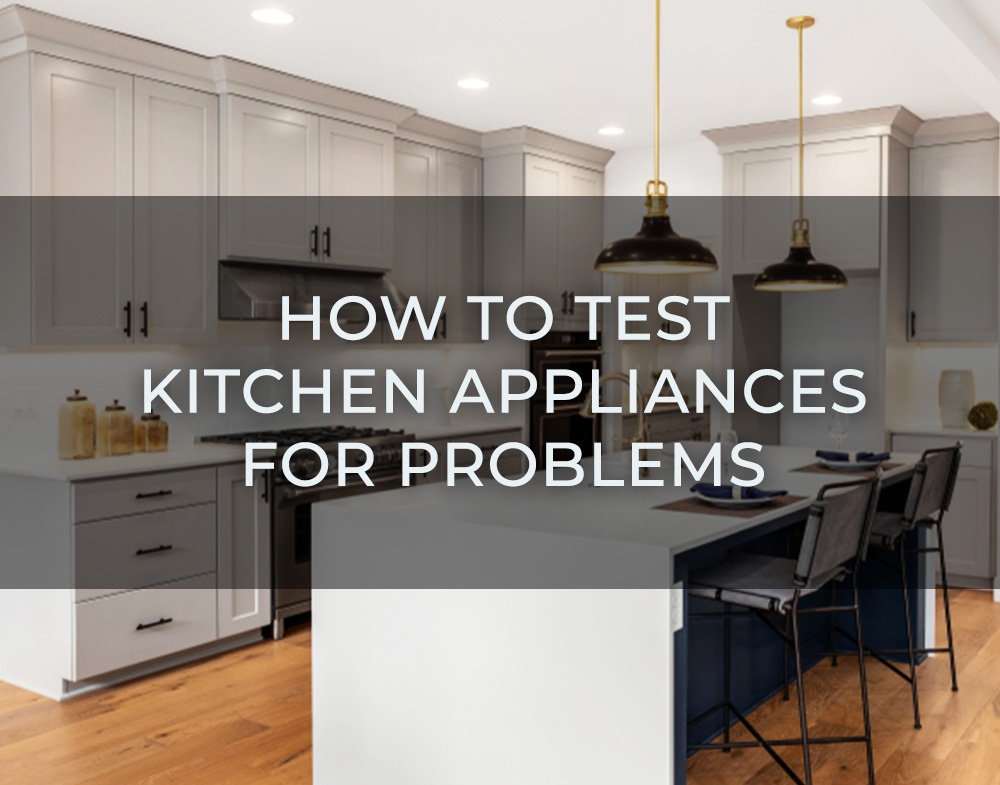How To Test Kitchen Appliances For Problems

Every home has a kitchen area. In our kitchens, we have multiple appliances that make our sustenance easy and practical. As kitchen appliances are essential and necessary to the smooth functioning of your home, regular maintenance, and the occasional repair job is a must.
However, as a homeowner, we often lack in-depth knowledge and only have limited mechanical experience, making it difficult to test and repair issues with kitchen appliances.
To help you self-inspect and test all your appliances for defects and ensure peace of mind, True Blue Home Inspections has listed four common kitchen appliance problems and offered suggestions and ways to solve these issues.
1. The kitchen gas stove won’t ignite
First, you should know that most modern kitchen stoves need electrical power to operate the spark igniters that light the gas when released. Sometimes this power is accidentally lost if the power cord is unplugged. Check this cord first if you don’t hear the repeated clicking of the igniters when you turn on the gas. Note that sometimes these ignitors become clogged with food that has dripped from the pans. Be sure they are clean and open.
If you do hear the clicking and also see the sparks at each gas burner, you may have a gas flow problem. Check the gas valve, which is typically behind the stove, to ensure it is open. The valve handle should be parallel to the pipe to be open. If this valve is open, you likely have a severe problem inside the stove itself which may need some professional servicing.
2. The garbage disposal will not operate and just hums instead
This is typically due to something becoming jammed under one of the knives in the chopping chamber. First, be sure the power is off at the switch. In older models, there is typically a 1/4” hex drive port in the bottom center of the motor housing. This is for a hex wrench (normally provided with each unit) to be inserted and to manually turn the shaft and knives back and forth. This will usually loosen the stuck item and allow the unit to turn again. Check inside the chopping chamber to see if you can locate and remove the offending item. If not, run water through the unit for a couple of minutes to attempt to rinse it away. Then test the disposal again with the switch. If it becomes jammed again, repeat this process until the clog is removed.
Many newer models do not have this hex drive port. You must examine the knives from the top, try to locate the offending item, and remove it with pliers or other grasping tools.
3. The ice maker will not produce ice
This problem is typically due to the water line becoming blocked by some bit of debris or icing. If the home is older, the water line is likely fed through a pin-vice type valve which is attached to a nearby copper cold water pipe. This valve creates a small hole in the pipe for the water to enter the line. This hole can become clogged with small chips of debris. I suggest the valve be closed to push this debris through the hole and into the waterline. If this debris is significant, it may clog the line further up the tubing and become a problem again. Typically, this will clear the hole and allow water to flow when the valve is opened again.
If this is not the case, the waterline may be frozen inside the freezer compartment before it reaches the ice maker. If there is significant frost inside the freezer, this is the likely problem. I recommend the freezer be defrosted so as to thaw the water line and allow the water to flow to the ice maker.
If neither of these methods works, there may be a more significant problem with the ice maker (motor, thaw function, etc.) and may need professional servicing.
4. Cold air pours into the kitchen through the stove exhaust hood
If the exhaust hood terminates on an exterior wall where it expels the fumes to the outside, the tubing exterior port flapper may be stuck open from cooking grease or other debris. They typically have a spring system on the flapper, which will push it closed when the airflow is turned off. This spring may become clogged with grease or simply break from wear. If dirty, clean it as-best-as-possible and test the spring’s action. If the spring does not close the flapper after cleaning or is obviously broken, I recommend replacing the entire port cover with a new model.
For more information and ways to keep your home and appliances running like well-oiled clockwork, reach out to True Blue Home Inspections today! As a licensed, insured, and certified home inspector in Chicago, Illinois, I provide comprehensive inspections and detailed reports. My services include home buyer inspections, home seller pre-listing inspections, indoor air quality, and commercial lite. I also offer consultation solutions to my clients.
My services are available to clients across Berwyn, Chicago, Cicero, Des Plaines, Elmwood Park, Evanston, Franklin Park, Glencoe, Glenview, Harwood Heights, and Kenilworth. I also cover Lincolnwood, Morton Grove, Niles, Norridge, Northbrook, Northfield, Oak Park, Park Ridge, River Grove, Schiller Park, Skokie, Wilmette, Winnetka, and surrounding areas.
To learn more about the home inspection services I offer, please click here. To get in touch with me, please click here.